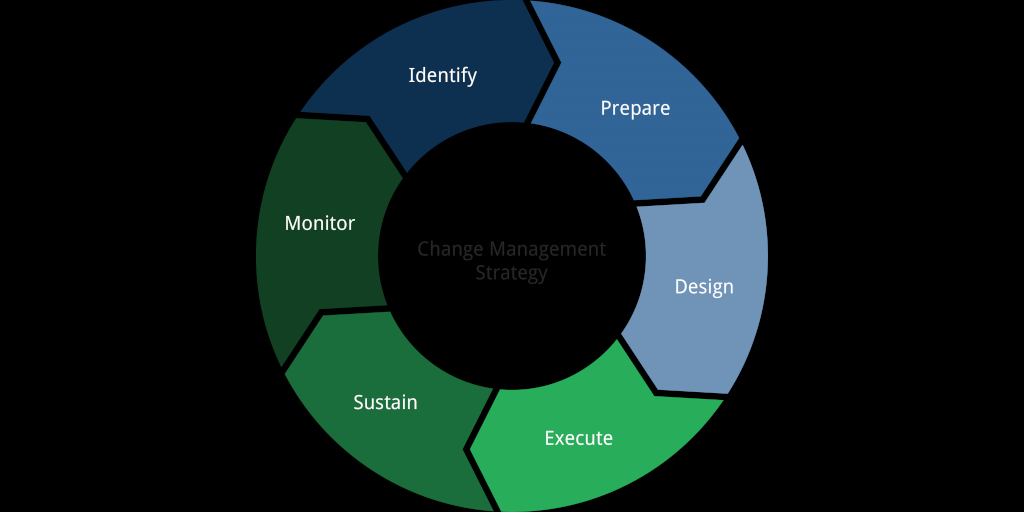This is a guest article by Dan Fries – entrepreneur, investor, and writer. Dan shows bootstrapped entrepreneurs and business owners how to prepare for an exit by making better long-term financial decisions.
The only constant thing in business is change.
Whether you are seeking to grow your business or looking to adapt your model to evolving market conditions, implementing strong change management techniques is key to keeping your business agile and sustainable.
Effective change management techniques have many different elements, some of which Process Street has covered before. For instance, checklists for teams can help you to keep a careful track of the development of your team, and these ten templates that optimize creative workflow management can provide your team with the flexibility and creativity they need to stay ahead.
One of the biggest obstacles to applying change management techniques in the contemporary workforce is the rising number of freelance, remote workers.
In this Process Street post, we’ll cover the following seven key principles for managing change within a modern, remote workforce:
- Change management principle #1: Develop your strategic vision
- Change management principle #2: Master the art of communication
- Change management principle #3: Build a business transformation team
- Change management principle #4: Encourage communication with customers
- Change management principle #5: Use a business process management suite
- Change management principle #6: Assess your workforce’s response to change
- Change management principle #7: Get your team together
- Apply change management principles using Process Street
Let’s get stuck in.
Change management principle #1: Develop your strategic vision
All effective change management processes start with a strategic vision of where you would like your company to end up.
In a remote environment, however, this is even more critical, because there is less room for improvisation.
Ideally, the first time you mention your change program to your remote workers, it should be accompanied by comprehensive documentation that spells out exactly what you want to achieve and the timelines for doing so.
These documents are crucial because over the course of the change implementation, remote workers can become frustrated if they don’t see how their individual tasks and time investment relates to a better business.
Developing a watertight vision for your company, and then communicating this to all of your employees, should be the first step in any change management process.
Change management principle #2: Master the art of communication
Focusing on change management within a remote workforce highlights a significant limitation of the more traditional approach to change management.
Traditional change management processes tend to focus on the technical solutions as opposed to the human, managerial elements; the system needed to manage team inboxes often obscures the human component that runs the operation.

Remote workers have fewer opportunities to meet their colleagues, and as a manager, you have less time to offer them guidance.
Many managers struggle with this at first, but then find that it improves their communication skills, because they begin to focus on the quality of their interactions, and not the quantity.
Achieving effective change in remote teams is dependent on effective communication.
To master effective communication, apply these four key principles:
Communication principle #1: Address changes early and often
A critical part of any change management process is identifying areas for development early, and formulating a detailed plan for the order in which your processes and systems will be transformed.
When working with remote employees, you should use every opportunity you have to communicate both imminent changes and longer-term changes to your team.
Communication principle #2: Include every layer in the change process
Don’t rely on upper management to drive the transformation processes. You should ensure that every employee, from the lowest levels of your organization to the highest, is made aware of the upcoming changes to your working practices, and is given the opportunity to contribute to them.
Communication principle #3: Communicate with customers directly
Your customer-facing employees are in frequent contact with your customers. Empower them to explain the direction of your business using the most direct tools available. Research on business texting shows that 90% of customers prefer to receive updates via text message rather than generic newsletters, so make sure you are using these direct tools to communicate with your customers.
Communication principle #4: Implement a portal to allow for employee input
One of the major frustrations for remote workers, and one of the reasons that remote work can be a disaster, is that they feel they have no direct say in the direction of your business. Building a portal to allow them to contribute to this is therefore an important part of any change management strategy.
Change management principle #3: Build a business transformation team
A traditional approach in change management, but one that isn’t often applied to a remote workforce, is to support the business transformation by implementing teams that are dedicated to guiding the business through the process.
You can easily apply this approach to your remote organization by building business change support teams or peer advocacy groups.
Business change support teams
Business change support teams are typically composed of employees from various levels within an organization, who all possess different skill-sets.
You can, for instance, designate one employee from each of your teams, and give them a role in your business change support team.
This team will then act as a central guide and source of knowledge about your change management process.
Including employees from every level of your organization means that this team will be able to engage easily with all levels of the company.
Peer advocacy groups
Peer advocacy groups can be used alongside dedicated business change support teams.
These groups can be powerful information sources for staff, who can use them to disseminate skills and knowledge within their teams.
This is particularly important for remote workers, because without face-to-face contact these workers can often fail to develop essential business skills. As an example, statistics show that only 24% of millennials have basic financial literacy, a topic that is a prime candidate for peer advocacy groups.
Both these types of teams can be extremely useful in shepherding change through your organization. Each team should have the skills and expertise that will allow your remote employees to stay engaged with transformation processes.
A word of warning though. Avoid creating a security vulnerability by giving all employees within these teams access to critical business systems. As with any other team, you should follow a zero-trust security strategy to prevent support teams or peer advocacy groups from becoming a target for a cyberattack.
Change management principle #4: Encourage communication with customers
Another aspect of managing change in remote teams, and one that is often overlooked, is the way your employees communicate with your customers.
You can put in place the best communication and information-sharing systems within your company, but if none of this information reaches your customers, they are likely to become frustrated.
In traditional environments, it is relatively easy to set up a customer liaison team that takes charge of managing customer communication.
In a remote team, this is more difficult.
However, as we outlined previously, distributing the responsibility to all your employees can help. If, throughout your change management process, you’ve been able to empower your employees to take the initiative, then customer management and communication will be easier.
The customer-facing team members that understand how and why your company is changing, are far better placed to communicate the company changes to your customers than those who aren’t customer-facing and, therefore, have a narrower perspective.
Ultimately, you should be in a position where all of your remote employees can explain the strategic vision that you have developed and know when, where, and how they are able to communicate this vision to customers.
Change management principle #5: Use a business process management suite
Many business managers find that having a dedicated piece of software for change management allows them greater oversight and control over the process.
Software designed to do this is referred to as a business process management suite (BPMS).
Using a BPMS is extremely important when working with remote employees.
It builds on the online communication that they’re already using but it also allows for asymmetric communication between team members. This enables them to communicate with each other, even if they work in different time zones and are separated by geographical distance.

Be aware however, that implementing another internet-based system for your team, may mean that you have to improve other parts of your infrastructure, specifically your internet connection. To enable fast and reliable communication between you and your team, analysts recommend having an internet speed of at least 50 MBps.
Choosing your BPMS
It can be tough to choose which BPMS is right for your company, but whatever BPMS you decide to implement, make sure it offers these three features at least:
- It should be able to capture the range and complexity of your existing business systems. If you are incorporating social media channels into your change management processes, for example, your BPMS should be able to record this.
- It should provide a full communication platform for your remote workers. This can be used to facilitate everyday communication, but also used to encourage input and feedback on your strategic business goals.
- It should allow you to model any changes you want to make to your business processes. This will allow you to quickly assess the impact of any changes you want to make, and spot problems before they occur.
Change management principle #6: Assess your workforce’s response to change
Whatever techniques and tools you use to implement change across your remote workforce, it is critical that you continually assess the response of your team to these processes.
One of the major challenges of any change management process is to ensure that both employees and management “buy into” the proposed changes to their working practices.
In an office-based team, this assessment happens automatically, because managers are in daily, face to face, contact with their employees.
For remote teams though, monitoring the success of change management is a little more difficult.
Below are three ways you can monitor the response of your remote workforce to your change management strategy:
- Structured interviews
- Focus groups
- Satisfaction surveys
A structured interview with a team member can be a useful way to assess how they truly feel about the changes that are being implemented. Strike a careful balance between formality and trust though. If the interviews are overly formal, and closely linked to management reporting channels, employees are less likely to share genuine insights and feelings.
One way of avoiding the above issue is to take a less structured approach to coordinate team feedback. You could, for instance, charge a junior member of your remote team with the task of convening monthly focus groups. Team members are more likely to share their true thoughts in this context, making the feedback more valuable.
Another way you could gauge how your workforce is feeling about the impending changes is to get them to fill in a satisfaction survey, like this Process Street Employee Satisfaction Survey for example:
Monitoring how your team feels, using the above methods, not only produces valuable intelligence on how committed your freelancers or remote workers are to the changes you are implementing, but it also provides you with data that can shape the ongoing planning of your transformation strategy.
Conducting focus groups with a broad range of freelancers can identify common problems and areas of resistance across different teams, and also highlight issues that are unique to particular staff groups or particular locations.
Change management principle #7: Get your team together
The most obvious way to remove the difficulties of working with a remote team is to get them together.
The ability to do this will depend on the distance between your team members, and the budget you have. However, the benefits of organizing face-to-face meetings, even short ones, often outweigh the costs of paying for travel, accommodation, venue hire, etc…
If several of your remote team members live in the same country for instance, then encourage them to get together. It will be a great opportunity to gather feedback on your change management process. This holds true even if these team members do not work in the same team. In fact, a face to face meeting between employees with varying foci is often the most productive.
Make no mistake: managing remote workers is difficult, and exponentially more so in periods of change.
Managing change in remote environments is easier if you take advantage of the tools available to do so.
Tools like Process Street for example.
Apply change management principles using Process Street
To manage change within your organization, clear communication is critical. Remote workers, at all levels, should be involved in the change processes at the earliest possible stage, and they should be empowered to ask questions, seek support from their peers, and be able to communicate your business change ideas to your customers.
Process Street can help you do all that.
Who is Process Street?
Process Street is super-powered checklists.
It’s state-of-the-art business process management software that enables you to create a process for everything.
Take a look at this short introductory video:
Process Street enables you to create a template and run individual checklists from that template to manage all your tasks. It allows you to connect to thousands of apps through Zapier, webhooks, or API integration and it gives you access to the following super-charged features that will automate the workflows within each of your processes, making recurring work fun, fast, and faultless:
- Stop tasks
- Dynamic due dates
- Task permissions
- Conditional logic
- Approval tasks
- Embed widget
- Role assignments
Watch this webinar about workflow automation to see how you can boost your workflows even more:
So now you know who Process Street is, let’s look at how you can use it to help you manage change within your remote workforce.
How can Process Street help me with change management?
Different change management theories, frameworks, and models suit different types of organizations and different types of change.
Regardless of the type of organization you have or the type of change you are managing, change management is a process. To make sure your entire organization follows this process, you need to create solid change management process templates.
Change management process templates will help you implement a strong change management strategy into your company. They will allow you to communicate your new vision to your employees and give them the chance to feel part of the process from the start.
Process Street has built dozens of change management templates, based on different change management models, to help organizations, like yours, manage change within their workforce.
Use this Satir Change Management Model Process Checklist to manage change by accounting for employee emotions and managing the impact on overall performance.
Instead of telling your employees what changes are to be made, why not try giving them a choice? Run this Nudge Theory Change Management Model Process Checklist so that employees have a say in the changes.
If you need to implement a large, unwieldy change try the Lewin’s Change Management Model Process Checklist. This template breaks up the big change into three bitesize chunks, with a direct focus on both processes and people.
Use these templates as they are, or feel free to add new fields, edit existing ones, use our super-smart features, and automate various workflows to make it fit with your organization.
Access each template right away, or, sign up for a free trial here.
For more change management templates, check these out.
Change management process templates
- Bridges Transition Model Process Checklist
- ADKAR Model Change Management Process Checklist
- McKinsey 7-S Model Process Checklist
- PDCA Cycle Change Management Model Process Checklist
- Kotter’s Change Management Model Process Checklist
- Kubler-Ross Change Curve Process Checklist
Feel free to peruse these related articles too!
Change management related articles
- 9 Free Templates for a Successful Change Management Plan
- 8 Critical Change Management Models to Evolve and Survive
- How to Make a Change Management Strategy (and Defuse the Growth Time Bomb)
- What’s Missing From Change Management Models
- 3 Steps to Successful Change Management in an Evolving Workplace
- The 5-Step Process Behind Change Management
- Organizational Change Management Models
Change is always difficult, but if you implement these principles and use a BPM tool like Process Street, you’ll be well on your way to managing the process effectively.
We’d love to hear about your experiences with change management in the comments. Who knows? You may even get featured in an upcoming article!







 Workflows
Workflows Projects
Projects Data Sets
Data Sets Forms
Forms Pages
Pages Automations
Automations Analytics
Analytics Apps
Apps Integrations
Integrations
 Property management
Property management
 Human resources
Human resources
 Customer management
Customer management
 Information technology
Information technology




Amanda Greenwood
Amanda is a content writer for Process Street. Her main mission in life is to write content that makes business processes fun, interesting, and easy to understand. Her background is in marketing and project management, so she has a wealth of experience to draw from, which adds a touch of reality and a whole heap of depth to the content she writes.